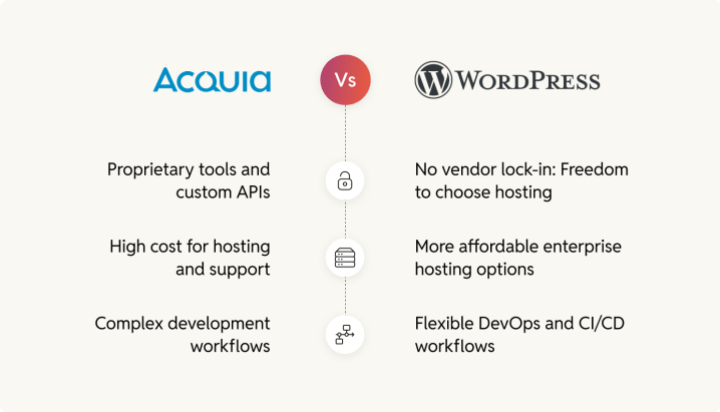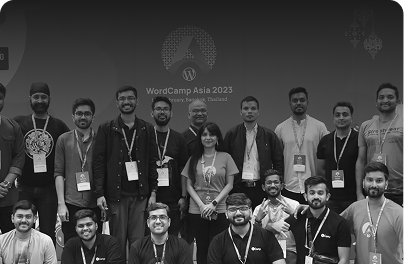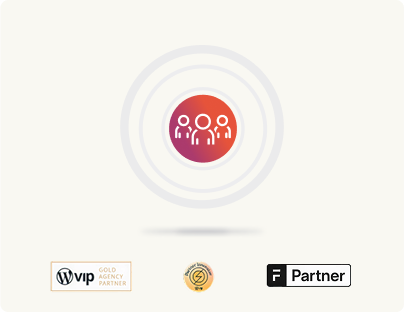Drupal to WordPress migration: The business case
Ask anyone for a Drupal vs WordPress take, and the default response will likely be: “Drupal is for complex enterprise projects where you need granular control over everything, while WordPress is for simple websites.”
This perception is deeply ingrained—almost an industry status quo.
But does it hold up today?
Not really.
Today, WordPress empowers you to do everything that Drupal does—but in a simpler and more maintainable way. It supports complex content modeling, offers enterprise-grade security, and is highly performant, making it a great Drupal alternative for large-scale digital experiences.
Many enterprises are switching from Drupal to WordPress because it offers lower maintenance, reduced total cost of ownership, and superior content management. In this handbook, we’ll show you exactly how to make that migration smoothly.
But first, let’s explore the key challenges with Drupal and understand why more organizations are making the switch—insights drawn from countless RFPs, inquiries, and our migration consultations.
Drupal requires “Drupal specialization;” WordPress keeps things simple and intuitive
You’d expect Drupal and WordPress to work quite similarly, given their shared roots in PHP. But that’s not quite the case. Drupal has its own way of doing things—from how you design the frontend to how you extend functionality in the backend.
Take theming, for example. Drupal relies on Twig, a templating engine that adds structure but also complexity. WordPress, in contrast, keeps things straightforward with PHP-based templating and now block-based themes and full-site editing.
Backend development also follows this—working with services, hooks, and YAML configurations needs Drupal expertise.
Drupal’s way of doing things translates to “Drupal specialization,” making Drupal developers harder to find and often more expensive. WordPress, with its larger talent pool, makes hiring easier and scaling a team more practical.
WordPress, in contrast, keeps things simple and intuitive.
WordPress’s templating system is PHP-based, with themes that are easy to modify. WordPress has also evolved with a block-based editor and full-site editing capabilities, enabling developers and content creators to work within a more streamlined framework.
Backend customization is just as straightforward, relying on action and filter hooks that are more approachable than Drupal’s services and YAML.
With its larger talent pool, WordPress makes hiring easier, more cost-effective, and scalable—helping teams grow without the technical limitations of Drupal. It’s also easier to upskill a development team in WordPress.
These things have a direct bearing on everything from your developer experience to TCO and maintenance.
Drupal’s updates and maintenance are challenging; WordPress keeps things simple
Drupal’s core architecture is built around modularity, a design philosophy that encourages the use of distinct modules to extend and customize the system. While this modular approach provides granular flexibility, it makes maintenance and updates challenging.
Each module in Drupal is essentially a separate entity that may depend on others. Managing these dependencies can quickly become complex, especially when custom modules are added. The more dependencies a Drupal site has, the more difficult it is to maintain.
Also, because the core structure of the platform and many modules are tightly interwoven, upgrading to a newer version often requires significant rework.
And even in general, updates in Drupal typically involve large, disruptive migrations that can be time-consuming and costly, often requiring a complete replatforming. Backward compatibility, too, has never been the platform’s strength.
Let’s talk about WordPress now.
While WordPress also embraces a modular approach through plugins, its ecosystem is built for ease of use. Plugins are designed to function independently or with minimal dependencies, reducing maintenance issues.
Unlike Drupal, which often requires full-scale replatforming to transition between major versions—resulting in higher costs and development effort—WordPress follows an incremental update model. This ensures that updates are applied smoothly without disrupting existing functionality. WordPress also allows one-click updates for core, themes, and plugins.
Also, one of WordPress’s greatest strengths is its commitment to backward compatibility. Unlike Drupal, where major version upgrades often force enterprises into costly, time-intensive replatforming, WordPress ensures that updates—whether minor or major—are streamlined, non-disruptive, and rarely require redevelopment.
A site built on WordPress today will remain functional and compatible years down the line.
Drupal boxes content teams; WordPress empowers editorial autonomy
Drupal’s editorial experience has long relied on CKEditor, a traditional WYSIWYG editor that, while functional, feels outdated.
With Drupal, content teams often find themselves working within rigid text fields , manually formatting content, and navigating complex workflows just to create and manage pages.
While Drupal’s structured content model is powerful, it often comes at the cost of flexibility. Editors must work within predefined content types and fields, limiting their ability to create rich, dynamic layouts unless IT teams step in to configure new setups. Want to add a new page structure? That likely means waiting for development resources.
Additionally, Drupal’s interface lacks true inline editing, forcing editors to work in backend forms instead of seeing changes in real time. While the Quick Edit module provides some basic inline text editing, it’s still limiting. Paragraphs & Layout Builder help too but only so much. This often results in trial-and-error publishing, where multiple previews are required before content appears correctly on the front end.
WordPress, in contrast, revolutionizes content creation with Gutenberg, its block-based editor that gives content teams full control over layout, design, and structure—without developer intervention.

- True inline editing: Editors can modify content directly on the page and instantly see how it will look upon publishing.
- What you see is what you get (WYSIWYG)—no need to switch between preview modes or rely on backend input fields.
- Block-based approach: Everything—text, images, embeds, buttons, and layouts—is a block, allowing for true drag-and-drop visual editing without relying on hard-coded templates.
- Reusable blocks and patterns: Teams can create standardized content sections that can be quickly applied across multiple pages, ensuring consistency and accelerating production workflows.
- Full-Site Editing (FSE) extends Gutenberg’s flexibility beyond posts and pages to headers, footers, and templates, allowing non-technical teams to manage the entire site layout (quite unlike how it’s done with Drupal’s cumbersome block placement and region-based layout system).
- Pre-built block libraries: Instead of waiting for developers to create custom modules, teams can leverage dozens of pre-designed Gutenberg blocks for designing content-rich experiences. These blocks often come with built-in styles that match modern design trends. Styling can be easily customized through the WordPress Customizer or by adding custom CSS, giving teams the flexibility to adjust fonts, colors, margins, and more to align with their brand identity.
Enterprise hosting providers: The Acquia lock-in problem and WordPress’ flexibility
When it comes to enterprise-grade hosting for Drupal, Acquia is positioned as the go-to managed hosting solution for large-scale Drupal deployments, offering infrastructure, security, and performance enhancements tailored specifically for Drupal sites.
While Acquia provides a well-optimized environment for Drupal, it also introduces a proprietary layer on top of the open-source CMS. This means that once you commit to Acquia, you’re locked into its ecosystem, making it significantly harder to migrate away without extensive re-engineering.

Let’s zoom in on the challenges of Acquia lock-in.
Proprietary tools and custom APIs
Acquia offers features like Acquia Cloud Platform, Acquia Site Factory, and Acquia Personalization, which are deeply integrated with Drupal.
While these tools enhance Drupal’s capabilities, they also create vendor lock-in because they aren’t easily replicated on standard cloud platforms.
For example, Acquia’s Lift personalization engine is a proprietary service for audience segmentation and content targeting. If you build your content strategy around Lift, migrating to another provider means losing these capabilities and having to rebuild personalization from scratch.
High cost for hosting and support
Acquia is significantly more expensive than many managed WordPress hosting providers. Their enterprise hosting plans often include a mix of infrastructure, support, and premium services, but at a steep price.
Acquia’s pricing structure can be prohibitive, particularly for companies looking to optimize costs while maintaining high performance, compared to alternatives for WordPress.
Also, Acquia’s custom DevOps workflows, deployment processes, and security configurations are designed specifically for its own hosting environment, making them harder to replicate elsewhere. If you decide to move off Acquia, you may need to rearchitect your hosting and deployment strategy, which will be a massive project in itself.
Complex development workflows
Acquia enforces a specific Git-based deployment workflow, which can feel restrictive compared to the GitHub Actions, Bitbucket Pipelines, or CI/CD tools that many development teams are used to.
The Acquia Cloud CD (Continuous Delivery) system is designed specifically for Drupal, making it difficult to align with broader enterprise DevOps workflows.
Acquia’s custom DevOps workflows, deployment processes, and security configurations are designed specifically for its own hosting environment, making them harder to replicate elsewhere.
WordPress, by contrast, gives enterprises the freedom to choose from a broad ecosystem of hosting providers, DevOps tools, and infrastructure setups.
No vendor lock-in: Freedom to choose hosting
Unlike Acquia, WordPress doesn’t require enterprises to rely on a single vendor. WordPress can be hosted with a host of enterprise hosting providers like WPVIP, Pagely, or Pantheon (just to name a few).
Also, because WordPress doesn’t impose a proprietary layer even with its own enterprise hosting solution (WPVIP), businesses can easily move their site between hosting providers without major redevelopment work.
More affordable enterprise hosting options
WordPress has a competitive hosting landscape, with multiple vendors offering enterprise-grade performance at lower costs compared to Acquia. With multiple options available, businesses can choose a provider that aligns with their budget and technical requirements.
Flexible DevOps and CI/CD workflows
WordPress doesn’t enforce a specific deployment workflow like Acquia’s Git-based system. Enterprises can integrate WordPress with their preferred CI/CD pipelines. This allows WordPress to fit seamlessly into modern enterprise DevOps practices without forcing teams to conform to a proprietary workflow.
Additionally, many managed WordPress hosting providers offer enterprise-grade security and performance optimizations without the complexity of Acquia’s proprietary solutions with features like:
- Built-in DDoS protection, Web Application Firewalls (WAFs), and malware scanning
- Global CDN integration for speed optimization
- Edge caching for high-traffic scalability
Security layers and configuration: Drupal’s complexity vs. WordPress’ streamlined approach
Securing a Drupal infrastructure involves configuring multiple security layers manually. In other words, Drupal gives you security as a framework, but you have to do most of the work yourself to ensure it’s properly implemented.
Multiple security modules for essential features

Drupal requires multiple contributed modules for fundamental security features.
Examples include:
- Security Kit for mitigating XSS, CSRF, and clickjacking
- Paranoia Module for preventing unauthorized PHP execution
- Two-factor Authentication (TFA) for enabling MFA
Keeping these modules updated adds to maintenance overhead since each has its own release cycle and potential compatibility issues.
WordPress addresses these fundamental security needs through integrated, all-in-one security plugins that bundle multiple features into one solution—significantly reducing maintenance overhead. Take Jetpack, for example.
Advanced logging and monitoring requires external tools
Drupal lacks a built-in security dashboard for monitoring threats. Enterprises need to integrate:
- ELK Stack (Elasticsearch, Logstash, Kibana)
- New Relic or Datadog for performance and security monitoring
- Custom Syslog configurations
To use ELK Stack, Syslog, or New Relic with Drupal, you need to install and configure contrib modules. This increases complexity and reliance on third-party services. While Acquia offers enterprise-grade monitoring, its fullstack integration requires custom development and external infrastructure.
Even with WordPress, you need to bring such monitoring through plugins, but you’ve enterprise-level all-in-one solutions in the form of plugins with WordPress. Besides, if you’re using an enterprise-grade hosting, you get built-in monitoring as well (depending on the hosting you use).
Custom security policies for compliance (GDPR, HIPAA, etc.)
Drupal does not natively include compliance tools, requiring:
- Custom policies for data retention & encryption
- Custom cookie consent mechanisms
- Enterprise-grade audit logging
It’s not like WordPress offers these built-in but you get a head start with its compliance-focused plugin solutions and built-in privacy controls.
Server-level security: Drupal vs WordPress
When it comes to server security, neither Drupal nor WordPress includes hardened server-level protection by default. The level of security depends largely on how the platform is hosted—whether it’s self-hosted or managed by a provider like Acquia for Drupal or WordPress VIP for WordPress.
If you’re running a self-hosted site on Drupal or WordPress, security is entirely your responsibility. Neither platform includes built-in protections against server-level threats like DDoS attacks, brute-force attempts, or malware injections. You must configure security manually or rely on third-party services.
Acquia, Drupal’s managed hosting solution, provides infrastructure security but leaves a lot of configuration in the hands of the development team. While Acquia offers security features, they are not enforced by default and require manual tuning.
WordPress VIP, on the other hand, enforces strict security policies across all sites. Unlike Acquia, which provides security options that need manual configuration, VIP automates security best practices by default.
Roles and permissions in security: Drupal vs. WordPress
Drupal has a highly flexible, granular permissions system built into its core, allowing enterprises to fine-tune access control down to individual fields and actions.
However, in enterprise settings, achieving full control often requires additional modules, adding layers of complexity.
While this extreme granularity is powerful, it also demands meticulous configuration and ongoing management—misconfigured permissions can introduce security gaps, and keeping everything aligned typically requires dedicated oversight.
WordPress, by contrast, offers a simpler, more streamlined approach that prioritizes usability while still delivering enterprise-grade security.
Its core role system is easier to manage, and with role and access management plugins or managed services like WordPress VIP, enterprises can achieve the same level of security and access control as Drupal—without the excessive configuration burden.
In fact, managed WordPress solutions (such as WordPress VIP) provide SSO, OAuth, and Active Directory integration, making enterprise authentication seamless and scalable.
Content modularity in Drupal vs WordPress: Complexity vs flexibility
One of Drupal’s standout features is its content modeling capabilities. The platform’s modular architecture allows developers to create custom content types, fields, and relationships with highly granular control over data structure and presentation
However, this flexibility comes with a cost. Drupal’s content modeling is powerful but complex, often requiring specialized development expertise to set up and maintain. Creating custom content types, managing relationships, and adjusting configurations can be time-consuming and requires knowledge of both Drupal’s built-in tools (such as the Content Types and Views modules) and third-party modules for extended functionalities.
Additionally, once the content architecture is built, ongoing maintenance and scalability can become cumbersome. Enterprises often need a dedicated team to ensure that content types, fields, and configurations remain aligned with business requirements and that performance is optimized.
On the other hand, WordPress takes a more intuitive approach to content management and modularity, designed to simplify the process while maintaining a high degree of flexibility. WordPress’s content modeling starts with posts and pages, which can be further customized through custom post types and custom fields. For most use cases, custom post types allow WordPress users to create distinct content structures (like portfolios, events, or products) with relative ease.
WordPress also supports content relationships through plugins such as Advanced Custom Fields (ACF) and Pods, enabling users to define complex content models. While this offers a simpler and more user-friendly interface than Drupal, it still offers substantial flexibility for more advanced content structuring.
With plugins like ACF and Pods, content creators can easily extend and modify the content model without relying on custom development. The interface is intuitive, making it easier for teams to create and update content structures without a steep learning curve.
Multisite management: Only WordPress delivers true centralization
WordPress Multisite lets you manage all your sites under one roof—whether for franchises, global brands, or internal networks. With a centralized dashboard, you get network-wide control, making it easy to oversee updates, plugins, and themes across multiple sites. You can also extend WordPress Multisite to enable deeper integrations—sharing everything from users to design systems and DevOps pipelines for a more streamlined workflow.
Drupal Multisite takes a different approach. It runs multiple sites from a shared codebase but maintains separate databases, ensuring stronger data isolation. This setup can be useful when sites need to operate independently while leveraging some shared infrastructure. However, it comes with trade-offs: higher maintenance overhead, complex updates, and no true centralized management, making it less efficient for large-scale multisite networks.
For enterprises managing multiple digital properties, multisite management is also a reason for migrating to WordPress. We’ve covered this topic extensively in our Drupal vs WordPress handbook—check it out for a deeper comparison.
Why moving from Drupal to WordPress makes sense for enterprises
Moving from Drupal to WordPress offers a compelling business case for enterprises looking for a simpler and more intuitive approach to development, content management, and security.
WordPress allows for innovation instead of dealing with complex configurations and expensive updates. Many organizations, in fact, migrate Drupal to WordPress for this very reason.
With a lower total cost of ownership, access to a broader talent pool, and a wider selection of hosting options, WordPress stands out as the ideal alternative for enterprises seeking scalability without getting caught up in the intricacies of Drupal.







